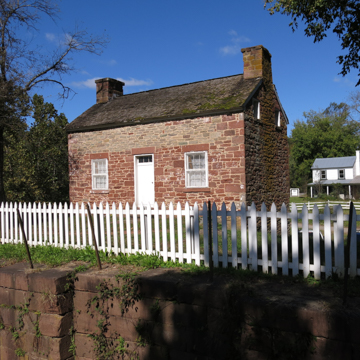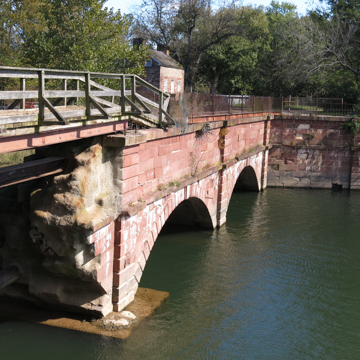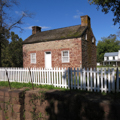Following the Potomac River, the canal provided a navigable waterway for the transport of goods and a link to emerging markets in the west. Clustered here are Lock 24, an aqueduct, and a lockkeeper’s house, all constructed of distinctive, locally quarried Seneca sandstone, known for its warm red color, strength, and durability. Lock 24 and the aqueduct are integrated to form a single structure built of massive stone blocks. The first of eleven aqueducts built along the canal between 1829 and 1832, it was the northern terminus of the first section, opened in 1830.
Adjacent is Riley’s lockkeeper’s house (1829), named for the keeper who resided here with his family from 1890 until 1924, when the canal ceased operation. Likewise built of rough-cut Seneca sandstone, it has distinctive quoining and slab lintels and sills and is banked into the hillside with a basement kitchen.
Remnants of the Seneca Stone Cutting Mill sit near the canal towpath, including the massive seventy-foot-long east and thirty-foot south walls of cut sandstone, and the stone sluice that fed water diverted from the canal to power the machine turbines. It was built in two sections, beginning c. 1830, and operated until 1900.














